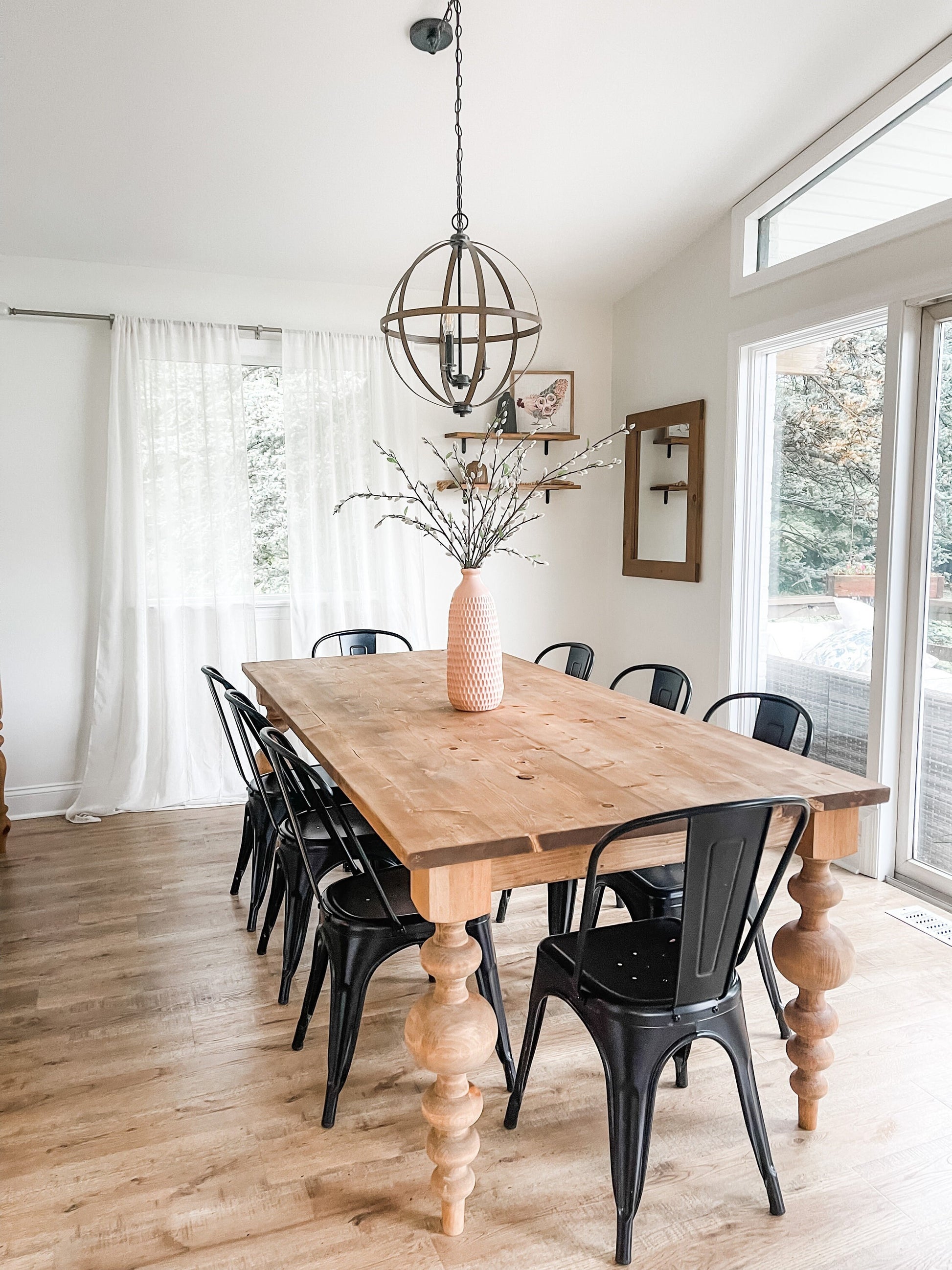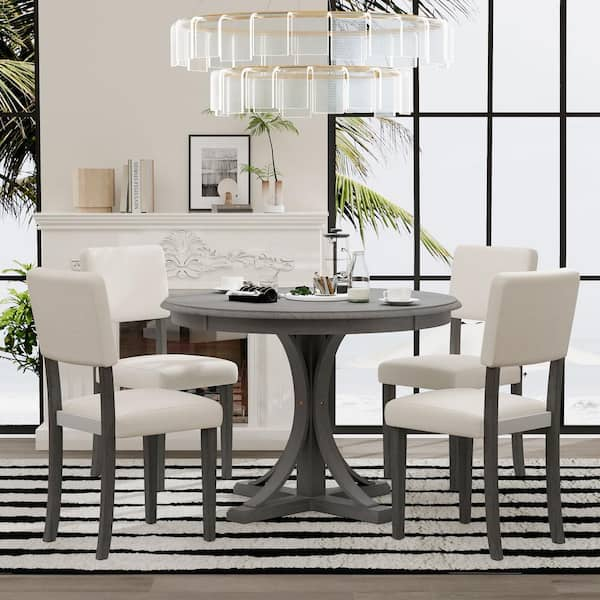Dining Room Table Legs: A Guide to Selecting the Right Style for Your Home
Dining Room Table Legs: A Guide to Selecting the Right Style for Your Home
Blog Article
From Conventional to Modern: Discover the Ideal Dining Room Table Legs for Your Style
The choice of dining room table legs plays a critical role in specifying the general character of your room, connecting the void in between standard craftsmanship and modern-day aesthetics. While traditional styles such as cabriole and turned legs stimulate a feeling of ageless elegance, contemporary designs like barrette and geometric choices present an opportunity for striking aesthetic rate of interest. Assessing the best equilibrium between these designs calls for a nuanced understanding of your existing decor and individual taste. As you take into consideration these components, the concern stays: how can you seamlessly incorporate these diverse leg styles to produce a harmonious eating experience?
Understanding Table Leg Styles
The range of dining-room table leg styles can substantially influence both the aesthetics and performance of the space. Each leg design contributes one-of-a-kind practical features and visual aspects, satisfying diverse design preferences and use needs. Recognizing these designs is critical for picking the appropriate eating table that lines up with your general interior design vision.
As an example, conical legs supply a tidy, traditional look that can improve a room's beauty, while pedestal bases offer stability and take full advantage of legroom, making them optimal for smaller rooms. Barrette legs, a hallmark of mid-century modern design, present an industrial flair, enabling a ventilated, open feel. Similarly, trestle legs stimulate rustic appeal, offering durable assistance and a sense of eternity.
Wood legs can bring warmth and appearance, whereas metal choices often communicate a streamlined, contemporary vibe. Inevitably, understanding table leg designs is essential for producing a natural eating area that shows individual style while guaranteeing usefulness and comfort.
Conventional Table Leg Options
When picking eating area table legs, traditional alternatives frequently personify ageless elegance and workmanship. These designs show a rich heritage and a dedication to quality, making them excellent for those who value classic visual appeals.
One of the most renowned conventional leg designs is the cabriole leg, defined by its elegant bent form. This layout usually features attractive carvings and is most frequently found in Queen Anne and Chippendale furniture. An additional popular alternative is the turned leg, which boasts a collection of smooth, rounded forms that give a classic look while maintaining stability.
Moreover, the straight leg, while straightforward, offers a basic and strong framework that can mix effortlessly with a variety of tabletop styles. For those drawn to ornate detailing, claw-and-ball feet legs evoke a sense of magnificence and can work as a sensational prime focus in any dining room.
Last but not least, stand bases, although not strictly legs, offer an alternative conventional choice that permits enough legroom and can be beautifully carved. Each of these conventional leg styles adds to the general setting of a dining-room, weding function with visual appeal.

Modern Table Leg Layouts
Modern table leg styles offer a diverse variety of designs that highlight ingenious products and clean lines. These designs commonly focus on functionality while working as striking centerpieces within an eating space. Minimal looks prevail, with legs crafted from materials such as steel, glass, and engineered timber, which contribute to a airy and modern feeling.
One popular layout is the hairpin leg, defined by its slim, tapered framework that provides stability without frustrating the tabletop (dining room table legs). This style is usually discovered in mid-century modern-day furniture and can effortlessly enhance various table shapes. Another fad is the use of geometric forms, where legs may handle asymmetrical or angular kinds, including aesthetic rate of interest and a touch of artistry

Mixing Styles for Special Spaces
Typically, house owners seek to develop distinct eating rooms that show their personal style by mixing numerous style aspects. This method allows for the incorporation of varied aesthetics, causing an unified yet unique environment. Pairing a rustic wooden table with smooth, modern metal legs can develop a distinctive comparison that raises the room's total allure.
In addition, integrating vintage table legs with contemporary table tops can evoke a feeling of background while maintaining a modern-day sensibility. Such mixes not just showcase specific taste yet likewise urge imagination, allowing home owners to curate an area that really feels both personal and inviting.
Shade plays an important duty in this blending procedure; choosing table legs that match or comparison with the existing color pattern can improve aesthetic passion. Whitewashed legs can soften the boldness of a dark table surface, developing a balanced aesthetic.
Tips for Choosing the Right Legs
Choosing the right table legs is necessary for accomplishing both performance and aesthetic appeal in your dining room. Begin by taking into consideration the overall design of your space. Conventional settings benefit from legs that feature complex makings or turned designs, while modern rooms may ask for sleek, minimalist styles.
Next, examine the elevation and security of the legs. dining room table legs. Basic table vary between 28 to 30 inches in height, so make certain the legs match this dimension for convenience. In addition, durable products, such as wood or metal, can boost security and longevity
Evaluate the leg shape also-- choices consist of right, tapered, or pedestal designs. Straight legs offer a timeless look, while tapered legs can add a touch of beauty. Pedestal bases offer sufficient legroom Click This Link and are ideal for smaller sized spaces.
Conclusion
In summary, selecting the perfect eating area table legs calls for careful consideration of both contemporary and traditional designs. By balancing leg style, elevation, and material with the total decor, a cohesive and welcoming environment can be achieved.
The selection of dining area table leg styles can significantly affect both the looks and functionality of the room. Inevitably, comprehending table leg designs is essential for producing a cohesive eating location that reflects individual design while making certain usefulness and comfort.One of the most iconic typical leg styles is the cabriole leg, identified by its graceful rounded form. Straight legs provide a classic appearance, while conical legs can add a touch of elegance.In summary, picking the optimal eating room table legs needs mindful consideration of both modern and standard designs.
Report this page